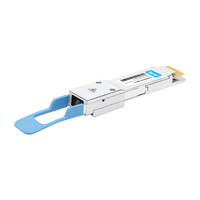The QSFP-DD (Quad Small Form-factor Pluggable Double Density) loopback is essential in high-speed networking to summon signal integrity and performance standards while the equipment is undergoing testing and diagnostics. This guide is meant to familiarise the reader with the concept of the QSFP-DD loopback technology, covering how it works, how it is used, and its benefits. The technical parameters, the sequence of operations, and the most appropriate methods of use will also be considered, as well as their relevance in light of the changing requirements of a data center. This article will provide you with essential knowledge concerning using the QSFP-DD loopback, whether you are a network engineer, a technician, or an IT professional.
Table of Contents
ToggleWhat is QSFP-DD Loopback?
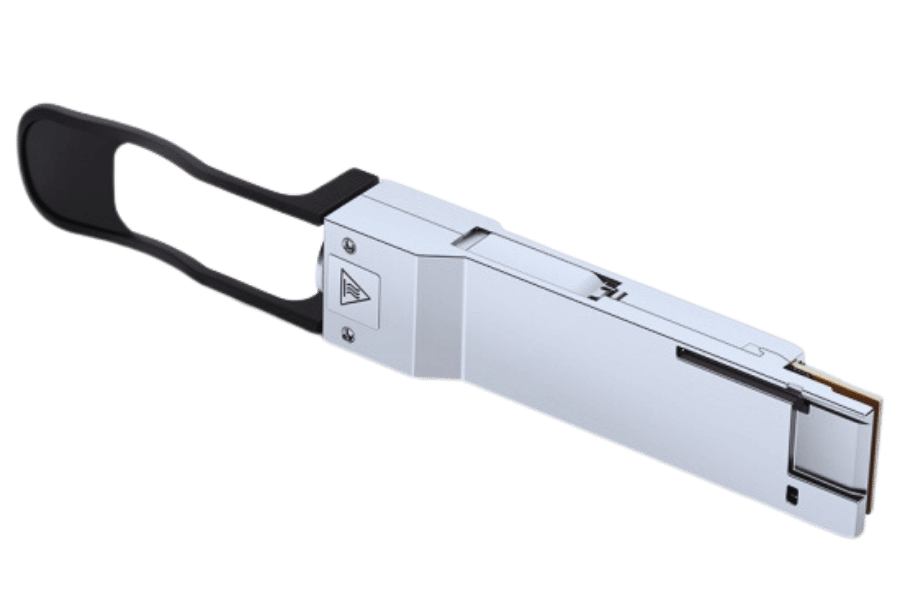
Understanding the QSFP-DD Standard
addition to the above-mentioned standards, it must be mentioned everything must revolve around QSFP – DD, also called quarter size enhanced -dense pluggable transceivers Direct Attach Copper and cables, and Multi-mode optical fiber used in today’s networks and mid-range rates of data transmission up to 400 Gbps. The existing QSFP interfaces are compatible while offering a step up in QSFP-DDS in terms of double the density, thus providing a better use of precious space in the data center. The standard also features an internal module with 32 channels of 25 Gbps supporting 400 Gbps of throughput. This was to cater to high-bandwidth applications and improve the performance parameters across the network. MS SDN-NFCLUS, oBs have copper and optical QSFP modules to support different application situations thus offering more convenience to network engineers and system architects. The adoption of the Qsfp-dd standard is significant and appropriate because it helps speed up the required data traffic and broadens the distances covered in contemporary networks.
Role of Loopback in Data Centers
Loopback testing has an important purpose in data centers as it allows effective testing, diagnostics, and performance testing of network devices and their interconnection. Loopback configurations are self-referential circuits used to conduct tests on the data paths and observe the faults in the routing systems. These tests can be carried out without taking other external traffic, thus simplifying troubleshooting and reducing downtime. In addition, loopback devices are also useful to perform system testing of any new equipment that has been installed to ensure that such equipment works well before commissioning into service. This enhances the reliability of the networks and their operation, which are very important issues in data centre operations, especially when the demand is high.
QSFP-DD Loopback vs. Standard Transceivers
The main difference between QSFP-DD loopback modules and ordinary transceivers is their purpose, especially in qsfp-dd port testing. QSFP-DD loopback modules are specifically made for test and diagnostic applications, allowing a network engineer to perform a validated test on the data paths and configurations without external traffic. This is crucial for troubleshooting and ensuring that devices work optimally before being deployed onto a system. On the other hand, standard transceivers facilitate data movement from one part of the network to the other to establish data communication between different devices.
Even when both configurations support high-speed data transmission (up to 400 Gbps), loopback modules have the advantage of being able to provide troubleshooting. Additionally, loopback units can create virtual environment conditions for testing performance and optimization. Briefly, QSFP-DD loopback modules, while being non-data transmission medium with a focus on data transmission, which standard transceivers do, are very useful for ensuring reliability on communications networks by performing tests and diagnostics.
How Does a QSFP-DD Loopback Module Work?
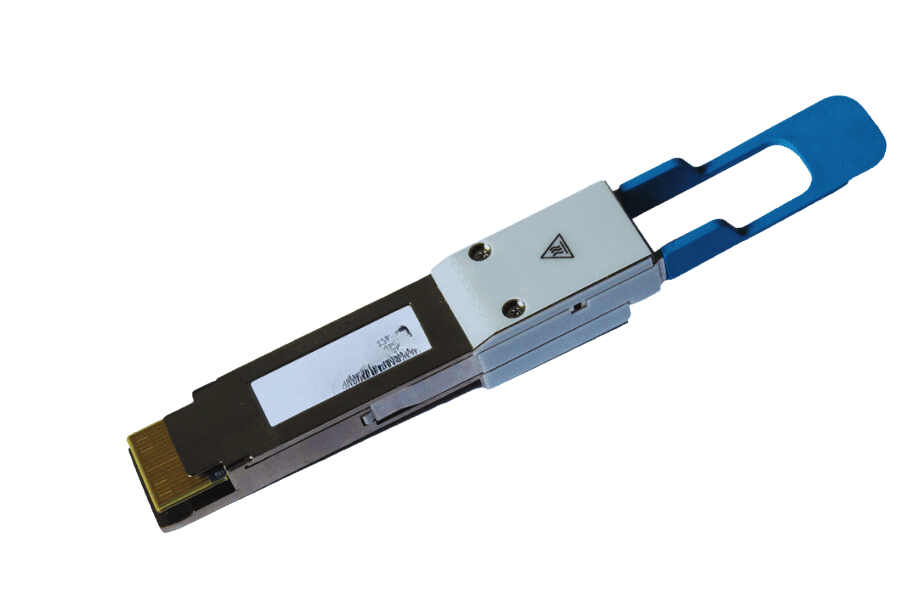
Internal Structure of a Loopback Module
A QSFP-DD loopback module comprises a single unit that is easy to house and allows signal redirection to its original point. Typically, the module comprises optical parts and electric parts, such as a transmitter and a receiver. The transmitter is responsible for changing electrical data into optical data, while the receiver reverses the process, enabling the module to loop data within the original device.
Concurrently, such modules are also fitted with monitoring capabilities, such as Digital Diagnostic Monitoring (DDM), which provides current information on temperature, voltage, or laser bias current and output power. This is important for network engineers as it permits the active checking and evaluation of the module’s operation performance under any functional environment that matches the norms of the MSA. Also, in the internal construction of the loopback module, some sub-components are made so that the original data does not degrade when tests are carried out. All in all, the internal structure is designed for safety and accuracy, allowing the performance of fiber optic QSFP-DD loopback modules to be a crucial part of network tests and restorations.
Electrical Loopback vs. Optical Loopback
This section easily outlines the differences between electrical loopback and optoelectrical loopback mode using illustrations. For instance, the comparisons are based on different circuitry or connectors because the end applications of these loopbacks are varied in the test strategy. Electrical loopback has been described as redirecting an electrical signal back to the origin device using a circuit or any kind of connector. This practice is mainly employed in cases where testing of electric interfaces is necessary.
This technique also offers a very simple and affordable method of evaluating the performance of the electrical circuit and ensuring the proper functioning of the transceiver without requiring any interaction with the optical network.
As opposed to this, optical loopback is concerned with the optical domain of communication using optical fiber to return the information from the transmitter to the receiver. Since both the optical transceiver and the optical path being used can be properly tested. Optic loops are a useful diagnostic tool for speed in high-speed networks as it is a closer representation of how things will be in the field, allowing engineers to assess the optical system, the losses, and link quality over lengths with various connectors and splices.
In the end, the decision to use electric loopback or optical loopback will rest upon the testing needs and the design of the network. As a result, electrical and optical loopback are essential for the designers to maintain the systems’ performance and reliability.
Operational Principles of 400G QSFP-DD Loopback Module
The 400G QSFP-DD loopback module is intended for high-capacity network validation and testing applications. Using a high form factor, the 400G QSFP-DD module is able to achieve a data bit rate of 400 Gbps which is reasonably high bandwidth in the modern networks. In addition, this module supports loopback operation by sending data signals from the transmit ports back to the receive ports in the same module, which can be very useful in emulating link conditions and eliminating the need for external cables.
This module uses a plurality of channels, which are usually designed to receive and transmit data at the same time on four channels. Each channel delivers 100 Gbps worth of information and only adds to the capacity available for the network. Furthermore, the use of the QSFPDD loopback module helps reveal the network status, whereby users can determine the quality of the link, gather performance indicators, and prevent problems. This skill is very crucial in circumventing loss of efficiency within the data transmission systems in the numerous applications of the systems, for example in data centers and organizational networks. Therefore, the 400G QSFP-DD loopback module is extremely useful for contemporary network and media technologies.
What are the Applications of QSFP-DD Loopback Modules?
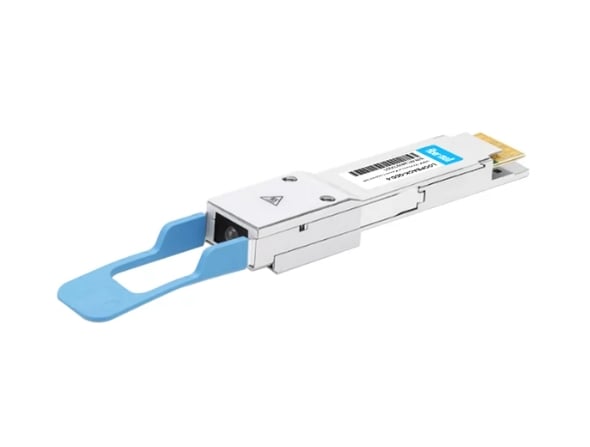
Loopback Testing in Network Equipment
Loopback testing is, in all its forms, one of the essential diagnostic techniques applied in network equipment to test the operational qualities of different network devices such as switches and routers. Electrical loopback permits the network engineers to check whether the data transmission channel is in working order and is within the acceptable range of operational parameters by feeding an outgoing signal from the device and refeeding it to the input. This method can be used to locate the faults and check the correctness of the network deployment, so all levels of the protocol stack are working as intended. Also, the loopback tests assist in the maintenance of the equipment by troubleshooting since the problems can be localized in the equipment and fixing them immediately, reducing the network downtime and hence improving reliability. Also, the use of loopback testing through QSFP-DDs modules has increased the speed and accuracy of the tests, which are imperative in ensuring effective network support.
Usage in R&D and Lab Environments
In R&D and lab settings, it is common to use QSFP-DD loopback modules for testing and verification of new networks and they’re launched-in-the-market adjustments. These modules allow engineers to form a closed loop for the data transmission to assess the functionalities of the new systems that are still in the design process. Moreover, by utilizing the high-speed levels of the QSFP-DD modules, engineers can also conduct extensive tests on the increase of bandwidth and decrease in latency and error rates, thus ensuring that the new equipment meets the required standards before being put into use. Furthermore, loopback testing also allows for testing of various working configurations and designs, eliminating unpredictability of the prototypes. This,, in turn,, reduces the time taken for the development while not compromising on reliability and performance standards.
Testing QSFP-DD Transceiver Ports
Assessing the performance of QSFP-DD transceivers is essential for the reliability and efficiency of the equipment for data transmission over the network. This involves, in most cases, the use of loopback tests, which check whether the ports configured to transmit data will also be able to receive data. In such conditions, it is necessary to use a QSFP-DD cable that is plugged into a loopback module and the transceiver port to form a loop for the movement of data to check the parameters of the signal, like strength, delay, and distortion. Performance metrics can be obtained and problems related to port configurations, compatibility or hardware issues can be isolated by using special test tools. Such comprehensive performance evaluation assures that the transceiver ports work properly and meet the datacom standards, thus improving the reliability and efficiency of the network.
Benefits of Using QSFP-DD Loopback Modules
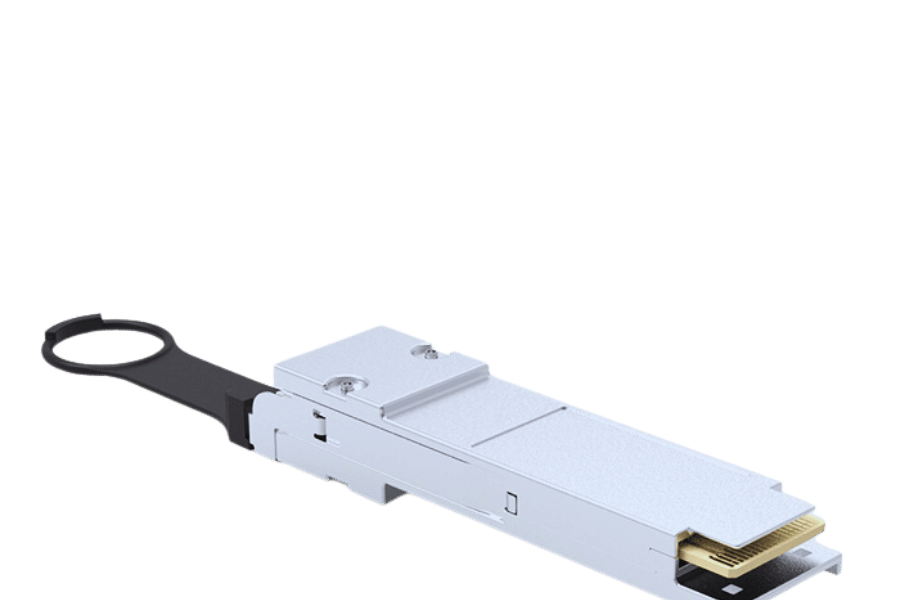
Cost-Effective Testing Solutions
The use of QSFP-DD loopback modules in the testing process also cuts back on the costs that are incurred during the network diagnostic and validation processes. The use of these modules makes it easier to test these ports as it eliminates the long processes of using external test configuration arrangements or several pieces of equipment to test port operation. In addition, engineers can use the loopback modules to automate some of their testing routines and hence optimize their workings by reducing the time taken in troubleshooting activities and increasing their productivity. This is quite cost-effective for such organizations that seek to ensure they keep their network standards high without spending large amounts of money on operations, which positively impacts the utilization of general resources.
Power Consumption and Thermal Dissipation
They monitor themselves in the context of QSFP-DD loopback modules, which consume a great amount of energy and produce heat, significantly determining how well the network functions and how long the equipment lasts. This means that these modules are done in such a way that it is efficient in a way that the power they consume in the other arrangement of testing phases is avoided, hence growing the cost-effectiveness of the process. In addition, heat management of the loopback modules is crucial to avoid excessive temperatures that negatively impact the performance quality of the signal in the source device, causing damage to the equipment. To help solve these problems, the modules are built with methods of power dissipation control such as sufficient airflow, heat sinks, thermal management systems, etc for safe operation temperature levels even under rates of 400Gbps data traffic. Wherever possible, reducing the dynamics of power consumption and the generation of all types of heat and the related processes will increase the reliability and stability of the entire telecommunications network while improving energy efficiency.
Wide Range of Data Rates and Speeds
The QSFP-DD loopback modules have been designed to accept a wide variety of bit rates, such as 100G, 200G, or more, providing the versatility of conducting network testing and performance measurements, especially in 800G OSFP. This inbuilt versatility makes it possible for engineers to recreate different types of networks and tune systems for specific applications. The ability to be able to work at various rates is not only used to improve the testing process but also helps in making sure that the new systems will be able to integrate with the older systems. In particular, large-scale integration Li-on-Si optical transceivers are expected to use photosensitive structures targeting mitigating optical absorption in the hybrid LInB-Li0.12 Mg0.88 O2-based thin films. Technical teams can use QSFP-DD loopback modules to measure performance in various protocols and confirm the feasibility of data transmission in complex protocols in modern high-speed networks.
Specifications and Performance of 400G QSFP-DD Loopback Module
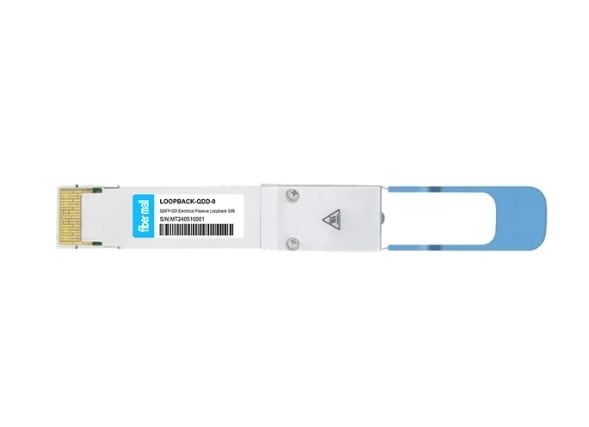
Technical Data Sheet and Specifications
The design of the 400G QSFP-DD loopback module is compliant with rigid design rules to ensure efficient performance. Below are some key specifications that are common across the top resources in this domain:
- Form Factor: QSFP-DD(Quad Small Form-factor Pluggable Double Density)
- Data Rate: Up to 400G Bandwidth, with provision for 800G configuration of the QSFP-DD
- Wavelength: 850 nm(for multi mode)/1310nm(for single mode)
- Connector Type: MPO/MTP for Multimode & LC for single mode.
- Operating Temperature: -40 degrees – 85 degrees (industrial grade)
- Power Consumption: About 3.5 W.
- Protocol Compatibility: It is important to conform to the MSA specifications of the modules used in contained networks to achieve proper functioning. Ethernet, Fibre channel, and InfiniBand
- Distance Range: Up to 100m for multimode and up to 10km distance for single-mode optical fiber
More importantly, these configurations highlight the capacity of the 400G QSFP-DD loopback module to withstand stringent network testing and validation requirements that are often required in high-performance networks. In this case, it is worth seeking accurate product limitations from the manufacturer of the concerned material regarding the specific area of use, most notably 400Gbps and 800G.
Performance Metrics: Data Rates and Insertion Loss
Assessing the performance metrics of 400G QSFP-DD loopback modules is essential in determining the effectiveness and dependability of the network. The modules increase the data transmission rate and can go up to 400G, which is required, especially in data centers and enterprises with the need for high speed and low latency. With respect to insertion loss, this is a measure that is most likely indicated in decibels and gives an insight into the extent of signal loss while in transit. The normal ranges for insertion loss for 400G QSQP-DD loopback module would, however, vary within 1.5 dB to 3.5 dB depending on the module and the approximate midrange loading conditions. High-speed networks impose such performance requirements and, at the same time, preserve low insertion loss to realize maximum performance of the system by improving the signal quality and the system reliability.
Multilane Configuration and QSFP-DD 400G Support
The elements of a QSFP-DD (Quad Small Form-factor Pluggable Double Density) module that enable multi-lane use are geared towards bandwidth consumption by taking advantage of multiple lanes provisioned for data. The maximum number of lanes supported in each QSFP-DD module is 8, and with each of the lanes having a data transmit capacity of 50G, the total throughput achieved is 400G. This type of organization provides networking solutions that are flexible and scalable as per the needs of today’s data centers. Moreover, backward compatibility extends to previous generations of QSFP-DD modules, such as QSFP+ and QSFP28, further broadening their application in incline networking. QSFP-DD technology developed by organizations should factor in the use of multilane configuration and how it is going to be integrated to pre-existing network elements and the overall operation of the network.
Frequently Asked Questions (FAQ) About QSFP-DD Loopback
What is the Operating Temperature Range?
In most cases, the operating temperature range of QSFP-DD loopback modules is normally -40°C – 85°C. This added range of temperature ensures consistent operation in various conditions, which is great since these modules can be used in data houses and communication systems that are subjected to changing ambient temperatures. It is necessary to follow the recommended operational limits in order to retain the proper operation of the optical module and to prevent its damage in the course of use.
How do you perform port testing with QSFP-DD Loopback?
Six essential steps are required while performing port testing with the QSFP-DD loopback modules for proper diagnostic and throughput proof. To start with, the user is required to find a switch or a router port to connect the QSFP-DD loopback module. The loopback module will internally connect all data sent to it and plug the transmitting port to carry out a test on the port’s performance. Use traffic generating applications or diagnostic equipment to perform a throughput round on the equipment to record the values when particular data is transferred. The effects will be subject to inflammation by hardware failure or incorrect settings, which must be traced in the results. Test data is used in this final step to ensure that what is being transmitted includes the approved patterns, confirming that such ports and the rest of the associated structures are still in good working condition. This helps not only with troubleshooting issues but also with performing post-installation work performance verification.
What Attenuation Levels are Available?
The degree of attenuation for QSFP-DD loopback modules will constantly shift with the particular application and the optical or electrical path design. Often, these modules are built to provide a standard range of values when attenuation is considered. For instance, based on the identified need and circumstances, one would find attenuation values such as 0.5 dB, 1.0 dB, 3.0 dB, and more. At the same time, it is reasonable to put forth a reasonable attenuation that conforms to the set network standards to minimize signal interference and loss to a great extent. Attesting to the above, there has to be evidence that the applied attenuation level satisfies the system demand and the performance requirement of the whole system.
Reference Sources
Frequently Asked Questions (FAQs)
Q: What is a QSFP-DD Loopback?
A: A QSFP-DD Loopback is an emulating device used to maintain the plug of the QSFP-DD system design. It is intended to rapidly assess the electrical and data transmission capabilities of the QSFP-DD ports without requiring a fully functioning optical transceiver.
Q: How does a QSFP-DD Loopback work?
A: A QSFP-DD Loopback module is utilized to route the electrical signals coming from the host device back to it, enabling the user to evaluate the function and quality of data transmission over the QSFP-DD ports during the R&D and production testing stages.
Q: What are the main applications of a QSFP-DD Loopback?
A: The main applications of a QSFP-DD Loopback revolve around testing the QSFP-DD ports, developing new products, carrying out tests after the items are produced, and verifying the network appliances without replacing the fully functional transceiver.
Q: What is the difference between passive and active optical loopback?
A: With a passive loopback, such as a QSFP-DD Loopback, the electrical signals are simply fed back to the system without any reinforcements or other modifications. In contrast, with an active optical loopback, certain control circuits or circuitry are embedded into the optical signals for reinforcement and modulation.
Q: Would it be correct to say that existing QSFP and QSFP-DD ports are usable in QSFP-DD Loopbacks?
A: Correct. Since QSFP-DD Loopbacks are intended for use with standard QSFP and QSFP-DD ports as well, it is possible to perform such testing with various kinds of network equipment, including electrical loopback, which is very helpful in the troubleshooting process.
Q: What are the positive aspects of using a QSFP-DD Loopback to carry out the tests?
A: Many advantages of using a QSFP-DD Loopback device for testing a phone unit include cost-effectiveness, ease, and coolness in testing the SQF-DD ports. They make it possible to test the ports without needing fully-featured transceiver modules.
Q: Define ‘transceiver devices.’ How are they different from loopback devices?
A: Transceiver modules are equipment that can be utilized for sending and receiving information through telecommunication channels such as Ethernet. They differ from loopback modules in that loopback modules do not transmit or receive data to be sent to other devices but rather sends the data back to the original device for evaluation only.
Q: Are QSFP-DD Loopbacks capable of running at 100G, 400G, 800G and similar high data rates?
A: Yes, as expected of QSFP-DD Loopbacks, these devices must operate at a very high data rate of 100G, 400G, and more so, 800G, which facilitates testing of high-technology network devices that conform to high data rate requirements.
Q: What goes into ‘per lane’ programming, and why is it essential in QSFP-DD Loopbacks?
A: “Per lane” programming in QSFP-DD Loopbacks permits the user of the loopback module to program each segment of the loopback module independently, allowing the user to test and diagnose one data lane in the QSFP-DD port. This guarantees that the port is characterized and assessed for its performance and dependability.

